Products are chosen independently by our editors. Purchases made through our links may earn us a commission.
Editor's Note: August 27, 2020 Note that these bags are designed to help you survive outside of your home. They are not intended for sheltering in place. These bags do not provide protection against the coronavirus. In addition to the contents of these bags, be sure to have products on hand to practice safe social distancing such as face masks and hand sanitizer.
The federal government recommends that, in order to be prepared to take care of ourselves in the wake of a significant natural or man-made disaster, we all lay aside enough food, water, and other provisions to see us through three day’s worth of bad times. This is because 72 hours is the period of time that many experts agree it could take organizations like the Federal Emergency Management Agency (FEMA) to arrive on the scene and begin rendering aid in the wake of a serious emergency. Many of us have enough food, water, and other supplies at home to see us through a three-day calamity. Unfortunately, not all emergencies start or can be ridden out in the relative safety of home. That’s why having a survival kit that’s pre-packed and ready to go at a moment’s notice is so important.
A good portable survival kit, also known as a bug-out bag or an emergency go bag, should have all of the essentials you’ll need to survive outside of your home, for 72 hours. It’s possible to buy a pre-packed survival kit—but we think you can do better. Our research suggests that even the best pre-packed emergency preparedness bags can come full of sub-standard equipment and lack a number of important essentials. Instead, we suggest creating your own. It’s a resource that everyone should have in their home.
Who should have an emergency preparedness kit?
Everyone. First responders and other essential services personnel work their tails off to keep us safe, in touch, and happy. Unfortunately, during a major emergency, such as an earthquake, the aftermath of a tornado or civil unrest, they can’t be everywhere at once. Police and ambulance response times suffer under the strain of need. Store shelves are bought out or looted in panics. Floodwaters can’t be held back forever. By ensuring that everyone in your household has their own emergency bag, in addition to the preparations that you’ve made at home, you and yours will be better prepared to take care of one another when no one else can.
Where should I keep my survival kit?
Before investing in anything, take some time to consider where you might need one and where you’ll have the space to store it until it’s needed.
You might want to keep one in the trunk of your car if you drive to work, every day. That way, you’ll likely have access to it, in most circumstances. If you commute on public transit, keeping one under your desk and having another at home could be a good solution. For remote workers, like me, having a single bag that you can grab at home and hit the road with when things get hairy is the way to go.
What supplies should I include in my survival kit?
To help you get started on building your own kit or to assist you in buffing up a survival kit that you may already own, we’ve put together this list of emergency provisions that we’ve tested and trust.
1. A high-quality backpack to store your supplies in
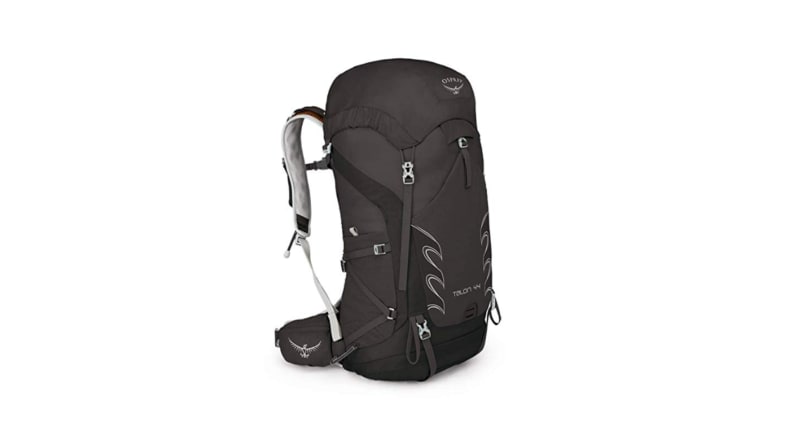
This reliable hiking pack is perfect for stashing your supplies in.
You’ll want to keep your supplies in a well-made backpack, instead of a duffel or other carrying device: A pack allows for the maximum amount of mobility. This could be important if you’re forced to navigate flood waters, uneven ground or debris. It’s a good idea for the bag you choose to be less conspicuous than say, a tactical bag like GoRuck’s GR1: during an emergency, nothing says "I have a bunch of supplies you could really use" to bad guys, like a bunch of cool zippers and MOLLE webbing. It might be tempting to buy an inexpensive, low-quality backpack to use with your emergency kit—after all, you won’t be using it every day. But during a crisis, you’ll be happy that you invested in good quality equipment that works as it should.
You'd be hard pressed to find a better backpack, for the price, to use with your emergency preparation kit than Osprey's Talon 44 backpack. With a ventilated back, stiff frame sheet and ample hip belt, the Talon 44 is comfortable to wear for long periods of time while carrying weights of up to 40 pounds. Given how much three day's worth of water weighs, that's a win. As its name suggests, this is a 44-liter pack which should be enough volume to carry all of the supplies you'll need to make it through an emergency, away from home. If your body type demands a smaller-sized backpack, the Talon also comes in a more compact, 42 -liter size, as well.
Much of the pack's storage space can be found in its large, main top-loading compartment. However, storage pockets built into the pack's lid, hip belt, sides, and outer shell present a few organization options.
While the Talon 44 is water-resistant, it isn’t waterproof. As such, you might want to consider investing in an inexpensive rain cover.
Get the Osprey Talon 44 Get the Joy Walker Waterproof Backpack Rain Cover
2. Waterproof bags to organize your supplies
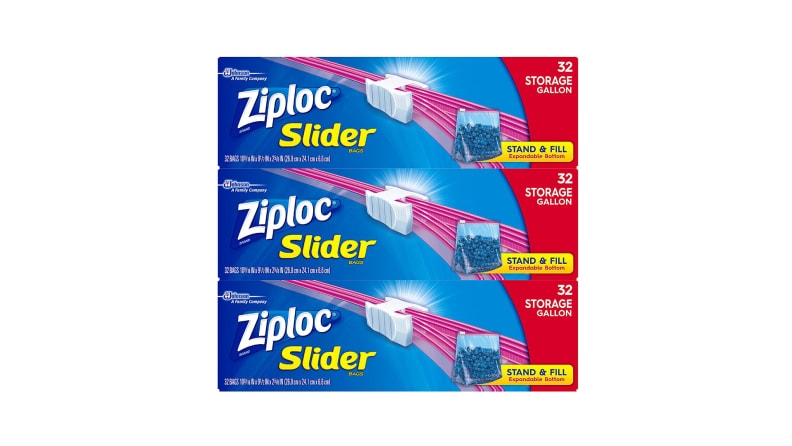
These waterproof, resealable bags will keep the contents of your survival kit dry and organized.
Using waterproof, resealable plastic bags like Ziploc’s Gallon Slider Storage Bags is an excellent way to keep your supplies organized inside the bag. Because they’re transparent, you’ll have no trouble finding what you’re looking for. What’s more, as you burn through the supplies in your emergency kit, you can use these bags to hang on to all of the waste left behind until it can be disposed of properly.
Get Ziploc Gallon Slider Storage Bags
3. Food to keep you nourished that won’t go stale
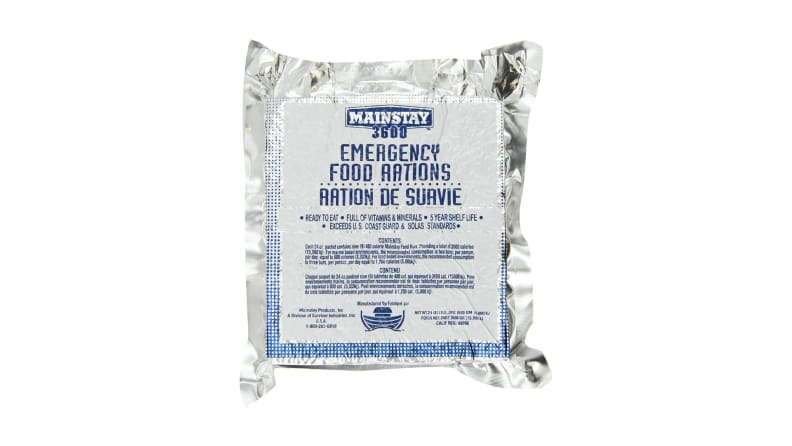
These ration bars have a shelf life of five years. Stick them in your survival kit and forget about them until you need them.
Under ideal circumstances, healthy adults between the ages of 36 and 40 require an average 2600/2000 calories per day (men and women, respectively,) in order to stay healthy and maintain body weight. If you’re forced to evacuate your home, you may find it difficult to source enough food to reach this caloric goal. Investing in high-calorie, shelf-stable rations like these Mainstay Emergency Food Bars is a smart way to ensure that you’re getting the sustenance you need. Each package of these rations contains six 400-calorie food bars, that require no preparation to eat. We prefer Mainstays over other, similar ration options for several reasons. First, they taste better than any that we sampled: vanilla with a hint of citrus. Second, the ration bars are sealed inside of a flat package, instead of the square ones that many of Mainstay’s competitors prefer, making them easier to organize inside of a backpack. That these rations come with a five-year shelf life means that you can buy them and leave them in your bag for ages before having to worry about replacing them.
Get the Mainstay Emergency Food Bars
4. Water with a long shelf life to keep you hydrated
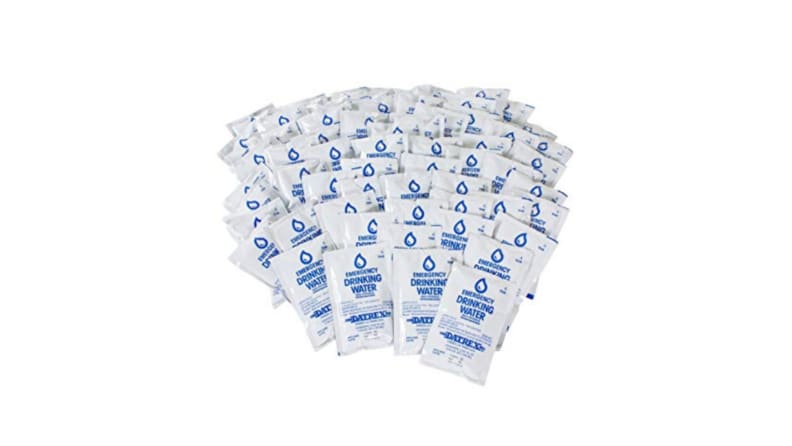
These water rations come in tough packaging and feature a five-year shelf life.
The Federal government says that everyone needs to drink one gallon of water, per day, in order to maintain a healthy level of hydration. Normally, we rely on what’s in our fridge, tap or in a vending machine when we get thirsty. None of these go-tos may be available during an emergency. You could rely upon a filtration system like a LifeStraw to sip on found water, but we don’t recommend it: Hoping there will be water isn’t planning in case it can’t be found.
These 125ml Datrex Water Pouches have a five-year shelf life, making them perfect for inclusion in an emergency preparedness bag. Now for some bad news, while you can totally buy enough of these packets to be able to see you through 72 hours, you might not be able to carry it all. Three gallons of water weighs around 25 pounds. That’s a lot of weight to carry around. Given that you’ll also have to haul around the rest of your provisions, we recommend carrying as much water as you can, but not so much that you’ll injure or strain yourself in the process.
Get Datrex Water Pouches Get the LifeStraw Personal Water Filter
5. A combination shelter and sleeping bag to keep you warm and dry
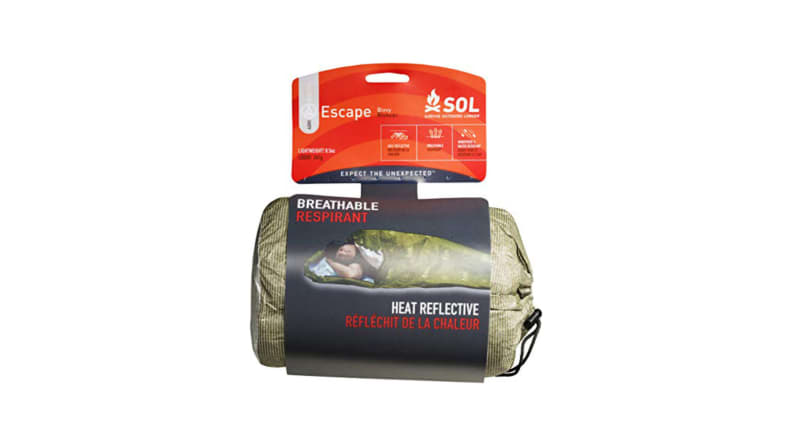
This basic shelter will keep you warm and dry.
Should you wind up having to evacuate your home, ideally, you’ll be whisked away by the authorities to a warm, dry location. But there’s no guarantee of that, so let’s prepare for the worst, instead. The Survive Outdoors Longer (S.O.L.) Emergency Bivy is currently our favorite emergency shelter. It features a waterproof exterior that’ll protect you from wet, muddy ground and pouring rain, this durable lightweight shelter, which resembles a sleeping bag, is made of materials that are designed to reflect up to 70 percent of your body heat back at you while you’re inside of it. Despite it’s reflective, insulate qualities, the Emergency Bivy is breathable, so the moisture from your sweat and breath that would normally accumulate inside of the shelter while you have it cinched closed, are whisked away, helping to keep you dry. We love that it can be unrolled and used anywhere, even in the middle of a windstorm—unlike a tent or tarp.
Get the Survive Outdoors Longer Escape Emergency Bivy
6. A portable shelter for extra protection
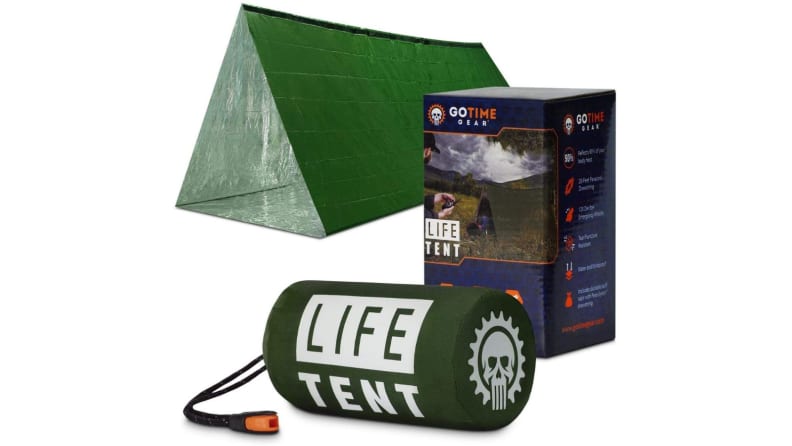
Crafting a temporary shelter is easy with the contents of this kit.
S.O.L.’s Escape Bivy will take care of sheltering you from rain and cold. That said, because no one wants to spend three whole days in a shelter the size of a sleeping bag, you might also elect to throw a low-cost emergency tent kit in your go bag, as well: It contains everything you’ll need to construct a shelter for a bit of added protection from the elements, provided the conditions are right to erect it.
Get the Go Time Gear Life Tent
7. A rain poncho to keep you dry on-the-go.
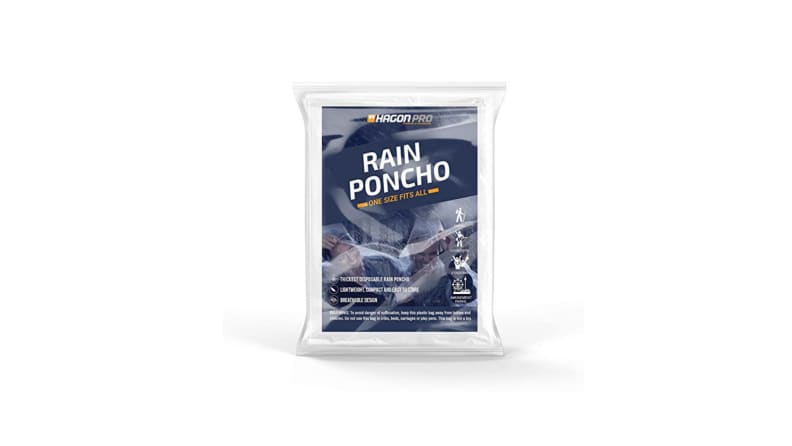
When the rain starts to fall, you'll be happy to find one of these ponchos in your survival kit.
It’s a good idea to include a lightweight rain poncho in your kit, as well. After all, if it’s raining, you’ll need to stay dry while you set up camp or walk to a designated shelter. We like the Hagon Pro disposable Rain Poncho. It comes in a pack of five, so you’ll have a few that leftover to stick in your car, desk at work or to give to someone without one of their own. That’s a win.
Get the Hagon Pro disposable Rain Poncho
8. A tool to start a fire, in any weather
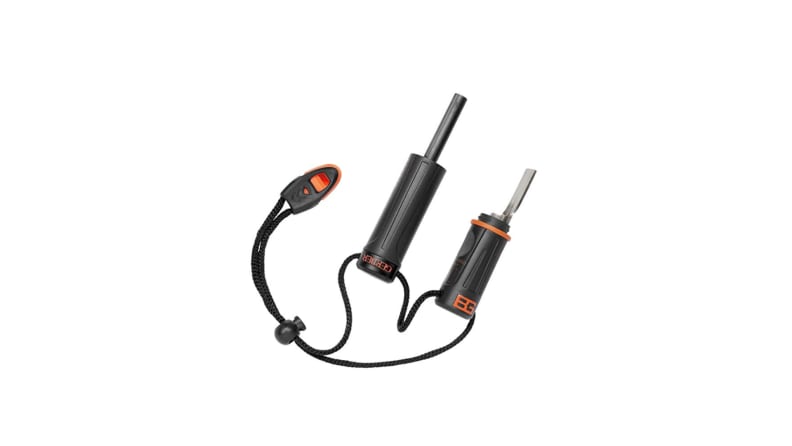
This fire steel will help you to spark a fire, no matter the weather.
The Gerber Bear Grylls Fire Starter comes packing a ferrocerium rod and metal striker, capable of setting a spark to tinder, in any weather. It’s well made and ]its chunky handle makes it easy to use, even with gloves on. This fire starter comes with a waterproof compartment for storing dry tinder and a built-in emergency whistle if you want to let others know where you are.
Get the Gerber Bear Grylls Fire Starter
9. Dry tinder to help get that fire started quickly
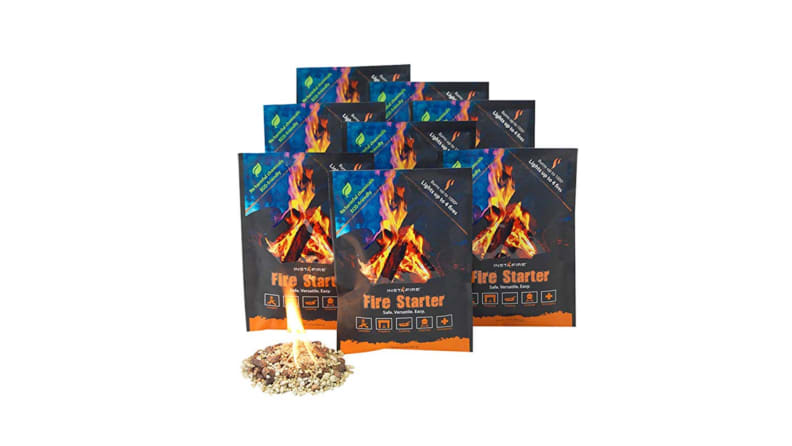
Having dry tinder makes lighting a fire a whole lot easier.
While it’s possible to get a fire started with the small amount of dry tinder that the Gerber fire starter we recommend can hold inside of it, more dry tinder is always better. Each pouch of InstaFire Granulated Fire Starter contains enough tinder to start a minimum of four fires. Pour a measure on to the ground, set a spark to it and you’re in business.
Get the InstaFire Granulated Fire Starter
10. Bathe without using water
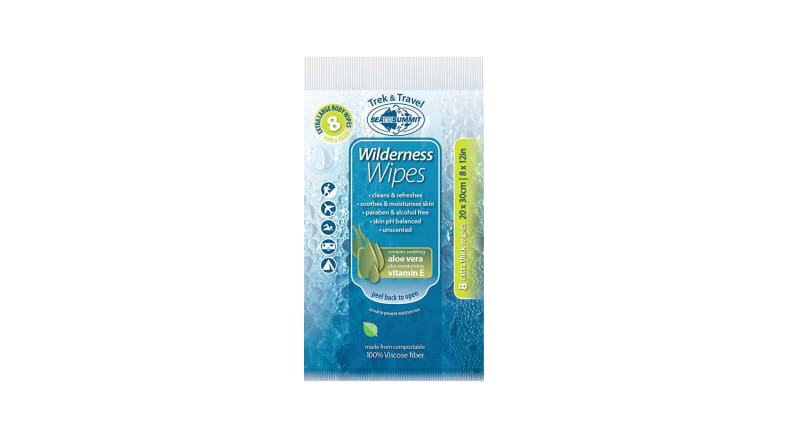
These tough, large, moist towelettes make bathing possible when water is scarce.
That you’re being forced to carry drinking water is a good indicator that finding water to wash with might not be all that easy, either. Sea to Summit Wilderness Wipes are an amazing choice for giving yourself a bit of a backcountry bath when water is scarce. Most pre-moistened towelettes are sized to deal with small messes, like a countertop, sticky fingers or a baby’s bum. Not Wilderness Wipes: They’re large and resilient enough to wipe down your entire body without having to reach for seconds. What’s more, they smell nice and come enriched with aloe vera and Vitamin E.
Get Sea to Summit Wilderness Wipes
11. Make bathroom time a happy time
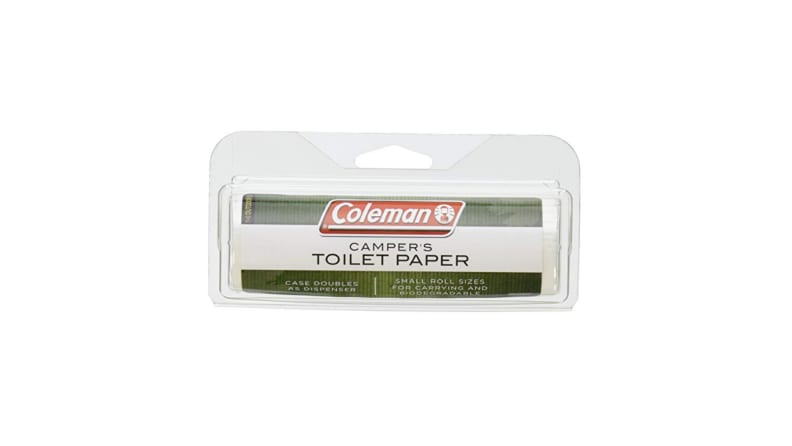
Having access to toilet paper makes any situation better.
You’ll be able to go a lot easier on those Wilderness Wipes if you remembered to pack some toilet paper. You could throw the best toilet paper we tested in a resealable plastic bag or you can pick up Coleman Camper’s Toilet Paper. Sealed in a waterproof container and lacking an internal cardboard cylinder to keep things compact, this bath tissue is two-ply, soft and completely biodegradable. It’s even safe for use in septic tanks.
Get Coleman Camper’s Toilet Paper
12. Sanitize your hands
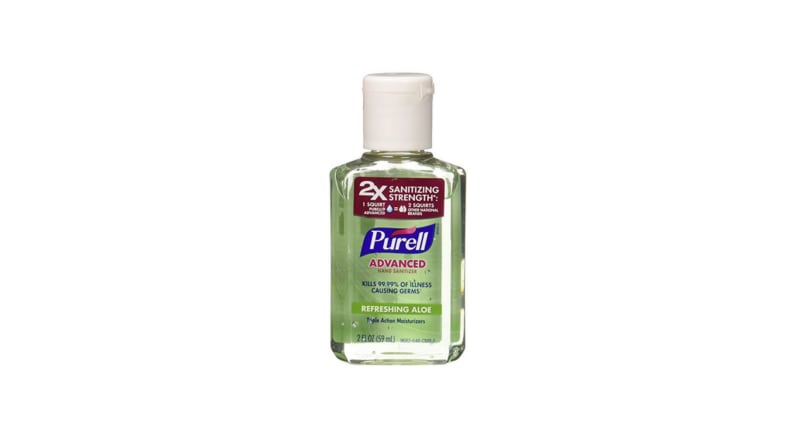
Staying clean means staying healthy. Hand sanitizer can help you do this when water is scarce.
Washing your hands after going to the bathroom, prior to eating or before providing first aid is an important part of maintaining good hygiene. These small bottles of Purell Hand Sanitizer let you do this, without water. Thanks to Purell's formula, its alcohol content won’t dry out your hands as badly.
13. Keep your dentist happy
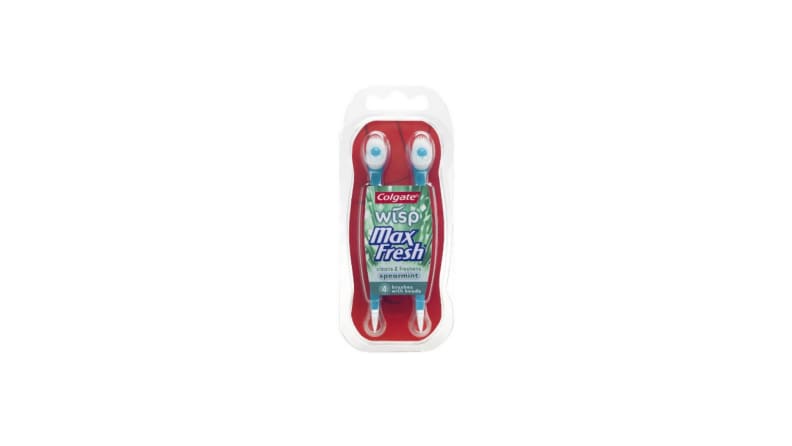
Not having any water to spare isn't an excuse for poor dental hygiene with these disposable toothbrushes around.
Three days is a long time to go without brushing your teeth. These single-use Colgate Max Fresh Wisp Disposable Mini Toothbrushes come impregnated with toothpaste and require no water to use. Your dentist and anyone close enough to smell your breath will thank you.
Get Colgate Max Fresh Wisp Disposable Mini Toothbrushes
14. A reliable basic medical kit
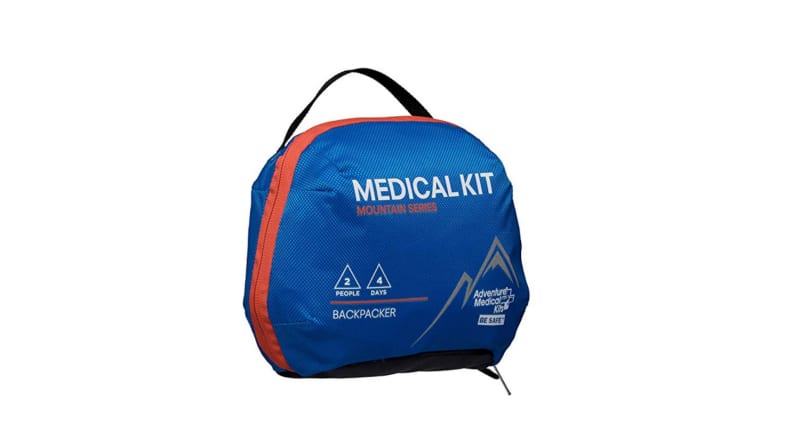
If you've taken a weekend first-aid course, chances are good that you'll be able to make food use of this kit.
In the first few hours and days of a major emergency, first responders and medical facilities may be so overwhelmed with casualties that getting medical aid in a timely manner might not be possible. In fact, should infrastructure like highways or our telecommunications systems be badly damaged, calling for assistance might not be in the cards at all. We strongly recommend taking the most comprehensive first-aid course that you have the time and money to afford. The more knowledge you have, the better you’ll be prepared when things go wrong. Here are our suggestions for your first aid needs.
We recommended the Adventure Medical Kits (AMK) Backpacker First-Aid Kit for use by motorists as part of their roadside emergency plans. It’s also a great choice for inclusion in an emergency preparedness bag. This first-aid kit is perfect for providing medical care to individuals suffering from light injuries. It contains everything you’ll need to tend to minor wounds, burns, and sprains. It also comes with single-dose medicines to treat allergic reactions, diarrhea, pain, fever, and inflammation.
If you have completed a weekend first-aid course, you should feel comfortable with using the supplies in this kit, but you’ll want to buff up this kit with the CAT splint and trauma kit we talk about below.
Get the Adventure Medical Kits Backpacker First-Aid Kit
15. A larger, more advanced medical kit for first-aid experts

For those with advanced first aid training, this kit is an excellent choice.
For most people, the supplies in the Adventure Medical Kits Mountaineer First-Aid Kit will be overkill. But if you made the wise decision to invest in advanced first-aid training or a wilderness medicine course, this kit is an excellent purchase. Like all of AMK’s kits, the Mountaineer is well organized, making it easy to find what you’re looking for, quickly. This can be especially important when dealing with a critical injury where blood loss is a factor. The Mountaineer contains supplies for a broad variety of injuries and ailments, including burns, fractures, dehydration, significant bleeding, and even dental emergencies. With the contents of this kit and the right training, you’ll be able to provide exceptional first-aid for yourself and those around you.
Get the Adventure Medical Kits Mountaineer First-Aid Kit
16. Additional medical supplies to supplement the first-aid kit you already own
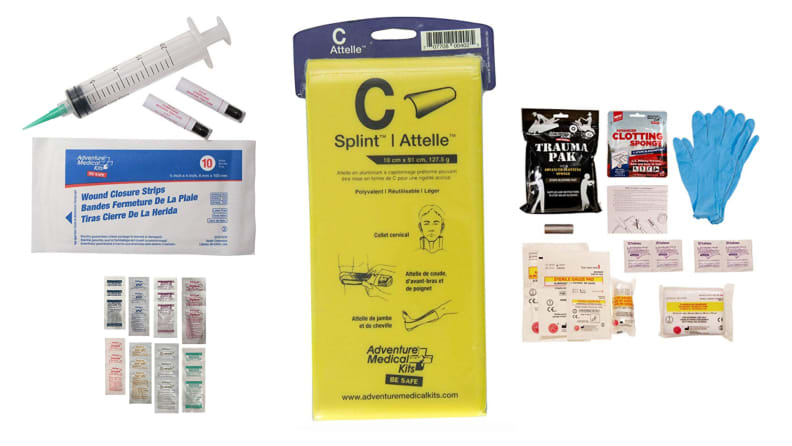
Adding a few additional supplies to your home first aid kit can make a huge difference to your level of preparedness.
If you already have a first-aid kit in your home that you’re comfortable with, use it: there’s no sense in buying products that you already have. However, you should know that there’s a very good chance that your kit was designed with it in mind that, should your injuries be bad enough, you’ll use the supplies inside of it before heading to the closest emergency room. In the wake of a natural disaster, the roads we rely upon for this purpose could be temporarily impassable: you’re not going to be able to get out and help may not be able to get to you. As such, we suggest investing in a few extra supplies for your first-aid kit that could make all the difference in a dire situation.
This C-Splint is an invaluable tool for immobilizing broken or sprained limbs. It can also be used as a neck brace. The material is soft enough that it can be cut to any shape or size. However, you’ll find it rigid enough to provide the support you require for immobilizing damaged extremities, providing comfort and care. You’ll want to augment your ability to care for wounds, as well: most first aid kits don’t have the supplies in them that are needed to stop a significant amount of bleeding from a serious laceration or penetrating wound. Start with this wound cleaning and closing kit. It’s designed to help you clean out and seal up deep, ugly wounds that will need stitches once emergency medical assistance becomes available. The Trauma Pak from AMK contains materials to deal with exactly these kinds of emergencies, including a hemostatic sponge that helps to rapidly clot open wounds. Finally, a collection of common medications sealed in waterproof, pre-dosed packaging, to make caring for yourself, or others, a whole lot easier. Each packet of medication is labeled with what it is and what it does.
Get the Adventure Medical Kits C-Splint Get the Adventure Medical Kits Wound Cleaning & Closing Kit Get the Adventure Medical Kits Trauma Pak with Advanced Clotting Sponge Get the Pac-Kit Medication Triage Pack
17. Tough gloves to protect your hands
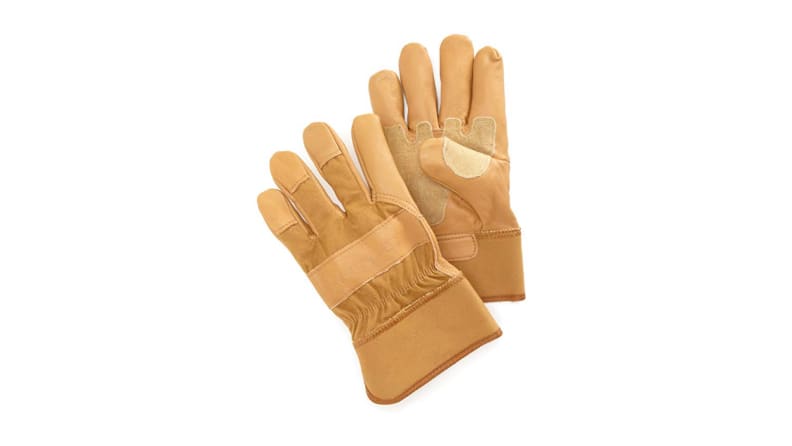
Protect your hands with these rugged leather work gloves.
In the wake of a natural or man-made disaster, it’s reasonable to expect that you may need to protect yourself from dust, debris and other hazards. In addition to wearing a reliable pair of climate-appropriate closed-toed boots or shoes when you leave your home, consider including a few extra protective items in your emergency preparedness plans.
After a great deal of research, we found that these Grain Leather Work Glove with Safety Cuff from Carhartt are the best safety gloves around. During testing, we found that they stood up to a tremendous amount of abuse without sacrificing user dexterity.
Get Carhartt’s Grain Leather Work Glove with Safety Cuff
18. A disposable mask to protect your lungs
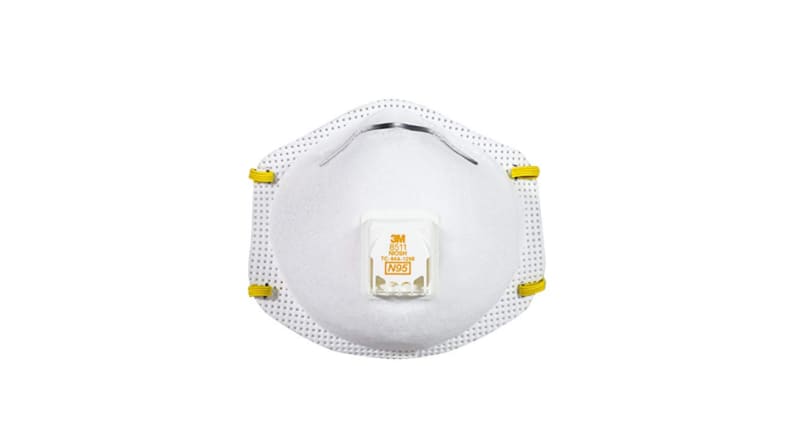
Protect your lungs from airborne particles with an N95 mask.
An N95 rating means that a respirator mask, like these 3M N95 Respirator masks with Valve, are capable of blocking up a minimum of 95 percent of airborne particles as small 0.3 microns in size. Wearing one will shield your lungs from dust and some airborne infectious agents.
Due to the high demand during the COVID-19 pandemic, N95 Respirator masks have become increasingly difficult to obtain. If you are able to obtain one, include in your survival kit.
19. Hazard protection for your head
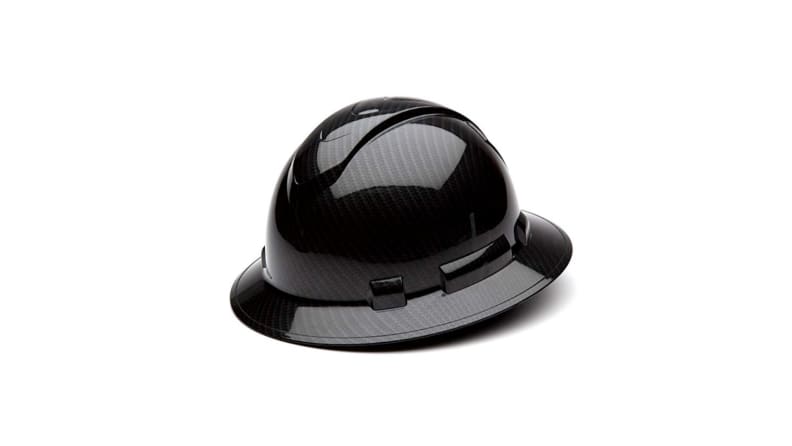
Hurting your head is a great way to make any situation worse. Protect yours with this hard hat.
In the aftermath of an earthquake or hurricane, buildings, infrastructure or even that shade tree in your front yard may have suffered significant damage—damage that could make for some pretty dangerous conditions inside and outside of your home. While it might not be the most stylish piece of clothing you own, the Ridgeline Full Brim 4 Pt Ratchet Suspension Hard Hat can help to protect your head from falling debris and other hazards.
Get the Ridgeline Full Brim 4 Pt Ratchet Suspension Hard Hat
20. A powerful, reliable flashlight
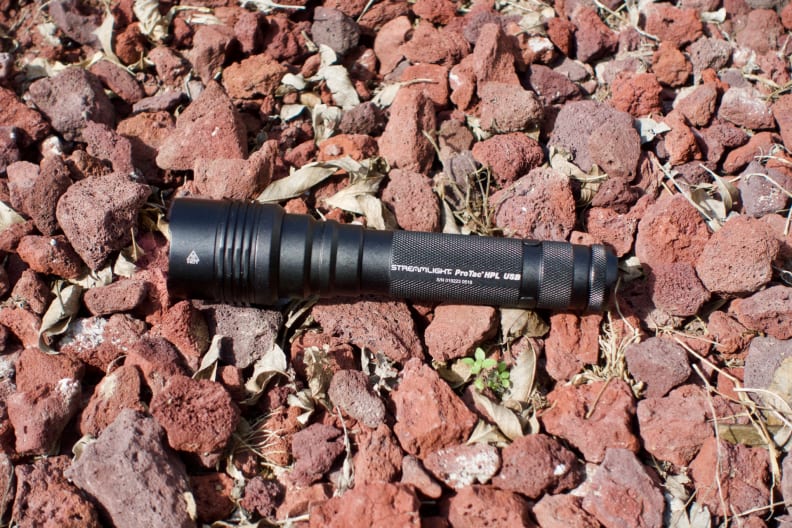
This powerful, waterproof flashlight can run off of multiple power sources.
In order to make it through an emergency safely, or at the very least, be a little bit more comfortable, you’ll very likely need a few tools. It’s better to have them and not need them than to need them and not have them. A tough, reliable flashlight, for example, is a must in any emergency kit. One that can run off of multiple power sources? Even better. As its name suggests, the ProTac HL-X USB is a dual fuel flashlight that can run off of a USB rechargeable battery pack or CR123A batteries. While the latter may not be as common as the AA batteries in your junk drawer, they’re inexpensive enough that stocking up on them is no big deal. What’s more, the amount of illumination that this light can provide is worth the hassle. On its maximum setting, the ProTac HL-X USB has a 1,000 Lumen output. That’s an incredible amount of illumination for a flashlight of this size. When cranking out 1,000 Lumens, you can expect 1.5 hours of runtime. It’s also possible to step down its power to 400 or 65 lumens to run for three hours or 20 hours, respectively.
With an IPX7 rating, this flashlight can be submerged in up to a meter of water for a half-hour at a time. Provided you don’t lose it, it’s likely the last flashlight you’ll ever have to buy.
Get the Streamlight 88085 ProTac HL-X USB Get a pack of 12 Streamlight CR123A batteries
21. A lightweight, disposable chemical light to light your camp or home with
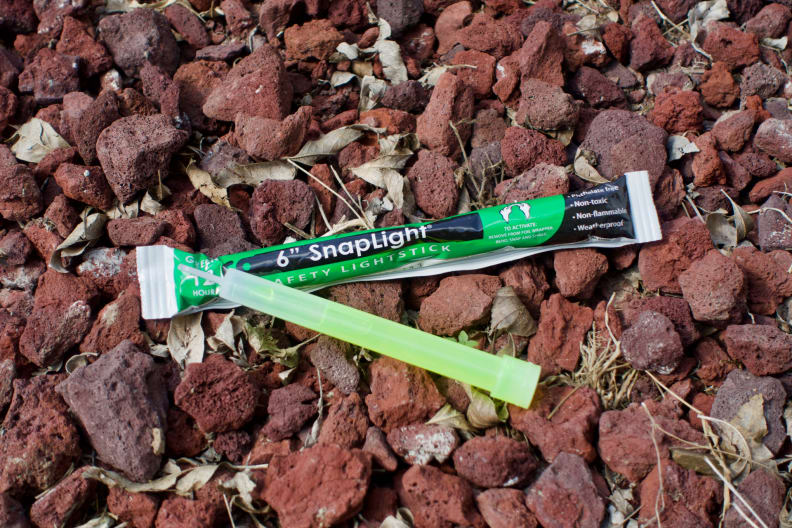
A chemical stick light can provide up to 12 hours of illumination
Flashlights and headlamps are fine for finding your way or flooding an area with a blinding amount of illumination for a short period of time. They’re less than ideal, however, for providing illumination over a long period of time. These six-inch snap lights from Cyalume, are. Use them anywhere a little extra light can help. Each of these chemical light sticks has a five-year shelf life and will run for up to 12 hours from the time it’s put into use. Best of all, they weigh practically nothing.
Get the Cyalume Green Glow Sticks
22. A simple, reliable knife that’s easy to maintain
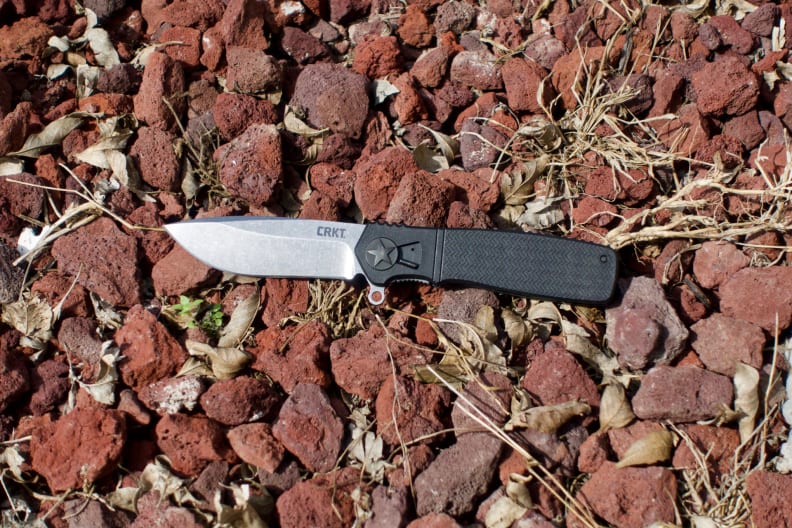
It's better to own a good knife and not need it than to need a good knife and not have one.
Cutting rope, slicing up food to share, slicing through duct tape—a reliable knife has 1,001 jobs in the field. The CRKT Homefront EDC is a lightweight folding knife with a strong, sharp blade that holds an edge incredibly well. That means less time sharpening and more time cutting. What’s more, to help you maintain it, the knife can be taken apart in the field, with no tools.
Get the CRKT Homefront EDC Folding Pocket Knife
23. A tough, lightweight hatchet that can do more than just chop wood
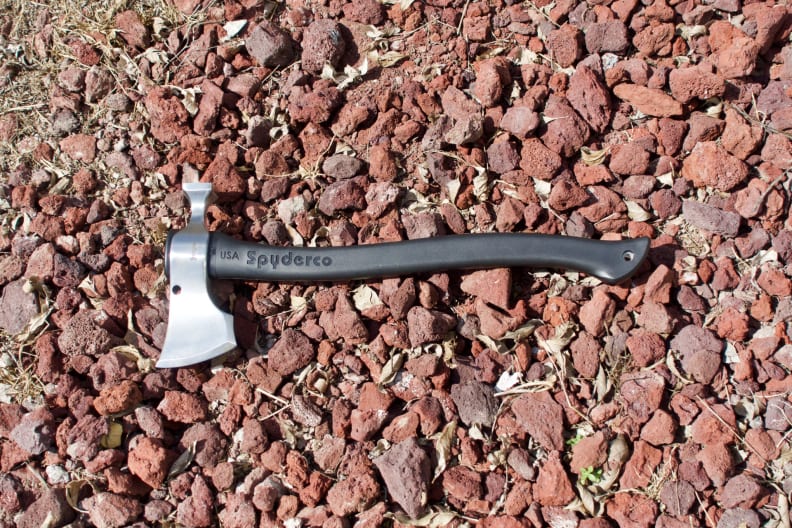
The HatchetHawk is a well-made tool that you'll be able to rely upon for years to come.
With its lightweight Polypropylene and Aluminum handle and tough 5160 tool steel blade, the Spyderco Genzow HatchetHawk offers the perfect balance of portability and usability. Its flat ground steel blade hacks through kindling and debris with ease and, when the time comes to build a shelter, you’ll find a flat striking surface opposite the HatchetHawk’s cutting edge that will make short work of driving a stake into the ground or nails into timber.
Get the Spyderco Genzow HatchetHawk
24. A lightweight wrench for shutting off gas valves
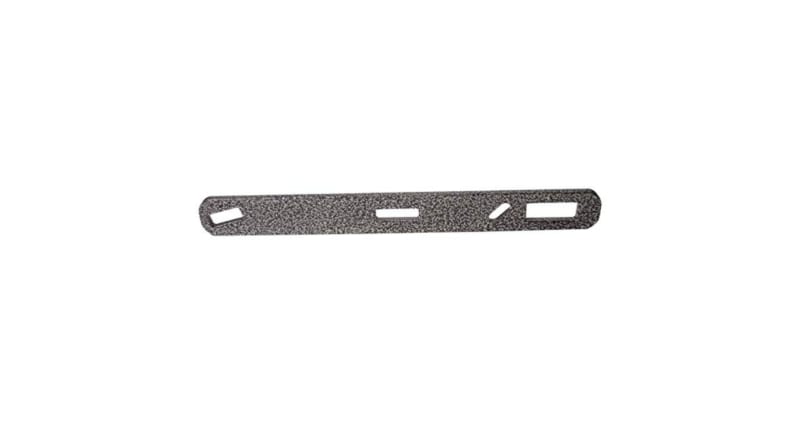
Ending a dangerous natural gas leak is easy with this wrench.
In the wake of an emergency, being able to cut the natural gas supply off from a ruptured line could save your home and, potentially, everyone in your neighborhood. The Superior Tool Gas Shut Off Valve Wrench should get the job done, in most cases. However, before you need it, you should check that to see that its compatible with the valve setup in your home—depending on where your gas valve is and how it’s oriented, you might need a different tool.
Get the Superior Tool Gas Shut Off Valve Wrench
25. A versatile weather radio that can reliably charge a smartphone
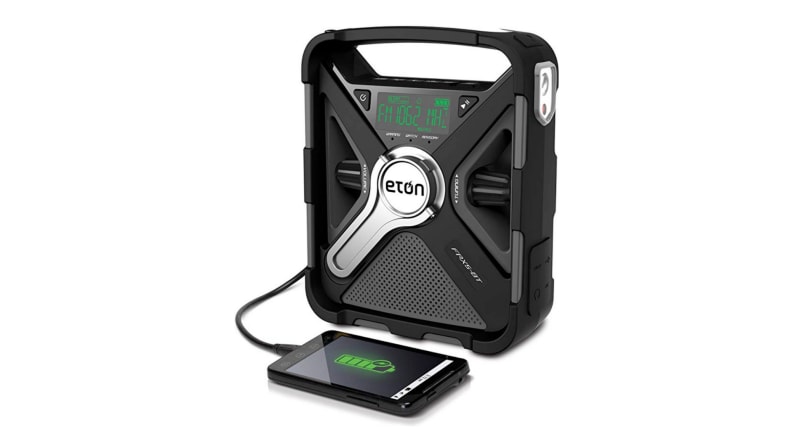
Stay apprised of the news and charge your smartphone or flashlight with this sturdy emergency radio.
In the wake of a natural or man-made our power grid, fiber-optic network and cellular infrastructure that we all rely on to communicate and get our news with may no longer be functional. As such, you’ll need a backup plan.
The weather-resistant Eton Emergency Weather Radio is larger than many of the emergency radios out there. But its size serves a purpose. Built into the back of this sturdy piece of hardware, is a tough solar charging panel that, when the sun is shining, can top off the radio’s 2000 mAh internal battery in an afternoon. The radio’s power reserve can then be used to top off the battery in a smartphone, or a flashlight, like the ProTac HL-X USB. When the sun refuses to come up, the radio can also be charged using its sturdy, built-in hand crank. Smaller, less expensive radios come with this feature, as well. But we’ve found their hand cranks to be less substantial, making them more difficult to use over a long period of time. Most importantly, the Eton Emergency Weather Radio’s powerful digital tuner is able to not only pull in AM/FM but also multiple weather radio bands, allow you to stay up-to-date on the latest news and weather conditions. Add to this the fact that this device can be set to provide you with a region-specific weather event alarm, and you can understand why we think it’s a great choice to include in your emergency preparation plans.
Get the Eton Emergency Weather Radio
26. A few personal items
In addition to everything on this list, you should consider including personal items, like the ones listed below, in your kit as well:
- Prescription medications
- Non-prescription medications you use on a regular basis
- A complete change of clothing, appropriate to your environment
- Printed or electronic copies of important documents, such as copies of your government ID, bank account records and insurance policies
- A list of contact information for friends and loved ones
- Feminine hygiene supplies, if required
- Prescription glasses, contact lenses and lens solution, if required.
- A minimum of between $20 and $100 in small bills (if there’s no power, there are no ATMs or credit card readers) to make emergency purchases with.
If you’ve taken responsibility for someone that’s unable to pack and carry their own supplies, you’ll also need to provide for the food water and other basic supplies that they’ll need. Babies and pets need food, water, and supplies to keep them safe and happy. The infirm require medication and, in some cases, additional batteries to run hardware such as oxygen concentrators.
